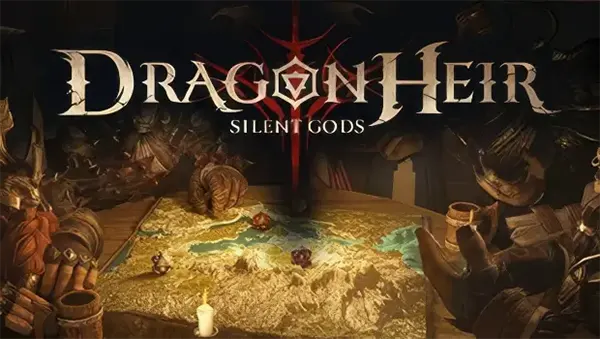
Dragonheir: Silent Gods – Is This RPG Builder Ready to Challenge Baldur’s Gate?
Tabletop-inspired role-playing games (RPGs) have seen a resurgence in recent years, with Baldur’s Gate 3 setting new standards for storytelling and player agency. Now, Dragonheir: Silent Gods steps onto the battlefield, promising an open-world RPG with deep character customisation and a modular gameplay approach. But is this new contender ready to take on the reigning champion? Let’s explore its core mechanics, strengths, and areas where it may need improvement.
Dragonheir: Silent Gods – A New Era of RPGs?
Developed by Nuverse, Dragonheir: Silent Gods attempts to carve a niche in the RPG genre by blending elements of classic tabletop gaming with modern role-playing mechanics. The game aims to provide an open-ended experience where players shape their own destinies through narrative-driven quests, turn-based combat, and a vast array of character customisation options.
One of the defining features of Dragonheir is its dynamic storytelling. Unlike traditional linear RPGs, this game incorporates procedural narratives, meaning that choices players make significantly alter their journey. With multiple branching storylines, the replayability factor is significantly enhanced.
Visually, Dragonheir employs a stylised aesthetic that leans heavily into high-fantasy settings. The world-building is rich, filled with mythical creatures, powerful factions, and ancient lore waiting to be uncovered. However, while the artistic direction is commendable, it remains to be seen whether it can match the level of immersion that Baldur’s Gate 3 achieved.
Gameplay Mechanics: Turn-Based Tactics & Customisation
The combat system in Dragonheir: Silent Gods is where it attempts to stand out. Instead of real-time action, it embraces a turn-based, strategic approach reminiscent of classic RPGs. Each encounter requires players to make calculated decisions, taking into account terrain, enemy weaknesses, and party synergy.
Character progression is another focal point. Players can customise their heroes with different classes, abilities, and equipment, allowing for a diverse range of playstyles. The game also introduces a unique dice-rolling mechanic, paying homage to traditional tabletop role-playing games.
Despite its ambition, the depth of Dragonheir’s customisation options may overwhelm newcomers. While hardcore RPG fans will appreciate the strategic layers, casual players might find the learning curve steeper compared to other mainstream RPGs.
Multiplayer & Co-op Potential
Unlike Baldur’s Gate 3, which offers a robust cooperative multiplayer experience, Dragonheir places a stronger emphasis on asynchronous multiplayer elements. Players can form guilds, participate in shared world events, and engage in PvE content alongside friends.
The multiplayer aspect extends to real-time tactical battles, where teams must coordinate strategies to take down formidable bosses. The cooperative mechanics introduce an MMO-lite feel, catering to players who enjoy group-based challenges without fully committing to a traditional MMO structure.
However, the success of these multiplayer elements depends on server stability and player engagement. If the community remains active and updates continue post-launch, Dragonheir has the potential to create a sustainable multiplayer ecosystem.
How Does It Compare to Baldur’s Gate 3?
Baldur’s Gate 3 revolutionised the RPG genre with its deep storytelling, fully voiced characters, and unparalleled player freedom. While Dragonheir: Silent Gods takes inspiration from similar elements, it adopts a more experimental approach with procedural narratives and an emphasis on multiplayer content.
Where Dragonheir excels is in its tactical combat system, which feels like a refined version of classic turn-based RPGs. However, it lacks the same level of immersive, choice-driven dialogue and NPC interactions that made Baldur’s Gate 3 a genre-defining experience.
Ultimately, whether Dragonheir can challenge Baldur’s Gate 3 depends on how well it executes its ambitious vision. If it delivers on its promises and continuously refines its mechanics, it could become a worthy alternative for fans of the genre.

Final Verdict: A Worthy Contender or a Work in Progress?
Dragonheir: Silent Gods has the foundation to become a compelling RPG experience. Its modular character-building, strategic combat, and procedural storytelling create a unique blend that could appeal to both solo adventurers and multiplayer enthusiasts.
However, its ability to rival Baldur’s Gate 3 will ultimately hinge on post-launch support, content updates, and how well its procedural storytelling holds up over time. A successful launch with an active player base and frequent improvements could position Dragonheir as a long-term competitor.
For RPG fans looking for an experience that blends tabletop mechanics with tactical gameplay, Dragonheir: Silent Gods is certainly worth keeping an eye on. While it may not dethrone Baldur’s Gate 3 just yet, it marks an exciting evolution in the genre.
Should You Play Dragonheir?
If you enjoy tactical turn-based combat, extensive character customisation, and an evolving multiplayer experience, Dragonheir is a solid choice. Its fresh take on RPG mechanics provides a distinct alternative to the more narrative-driven approach of Baldur’s Gate 3.
However, if you are primarily drawn to rich storytelling, voice-acted dialogues, and deeply immersive role-playing elements, you might find Baldur’s Gate 3 a more fulfilling experience. It all comes down to personal preference.
With its upcoming release, Dragonheir: Silent Gods has the opportunity to refine its systems and offer a fresh take on the RPG genre. Only time will tell if it can live up to its potential.
